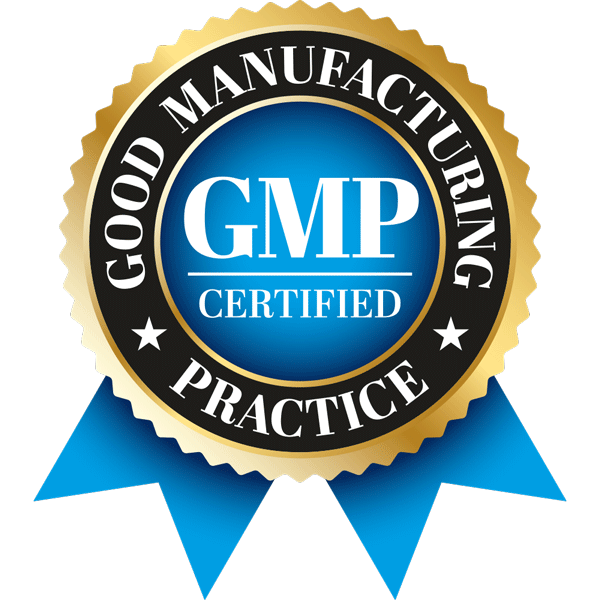
FDA and GMP Compliance: What You Need to Know
The U.S. Food and Drug Administration (FDA) enforces Good Manufacturing Practices (GMP) as a cornerstone of public safety and quality assurance. From routine inspections to pre-approval evaluations, the FDA ensures that manufacturers meet stringent standards to deliver safe, effective, and high-quality products.
For businesses, understanding the FDA’s inspection process and compliance expectations is critical to avoiding penalties, protecting brand reputation, and maintaining operational integrity. This guide breaks down the types of FDA inspections, what to expect during an inspection, the consequences of non-compliance, and practical tips for staying ahead.
Types of FDA Inspections
The FDA conducts several types of inspections to evaluate GMP compliance, each designed to address specific objectives:
1. Routine Inspections: A Proactive Measure
- Purpose: Scheduled visits to assess whether facilities consistently follow GMP standards.
- Frequency: Dependent on the risk level of the products, type of facility, and compliance history.
- Example: A low-risk food facility may be inspected less frequently than a pharmaceutical plant producing high-risk drugs.
2. For-Cause Inspections: Addressing Specific Concerns
- Purpose: Triggered by complaints, adverse events, or evidence of non-compliance.
- Focus: Investigates potential risks to public safety and determines corrective actions.
- Example: A manufacturer receiving repeated customer complaints about product contamination may face a for-cause inspection.
3. Pre-Approval Inspections: Ensuring Readiness
- Purpose: Conducted before the FDA grants approval for new products, such as drugs or medical devices.
- Objective: Verifies that facilities and processes meet GMP standards and can consistently produce high-quality products.
What to Expect During an FDA Inspection
Preparing for an FDA inspection is essential to ensuring a smooth process. Here’s a breakdown of what inspectors typically evaluate:
1. Documentation Review
- Inspectors review key records, such as Standard Operating Procedures (SOPs), Corrective and Preventive Actions (CAPAs), and quality control logs.
- Tip: Ensure all documents are accurate, complete, and readily accessible to avoid delays.
2. Facility Walkthroughs
- Inspections of manufacturing, storage, and quality control areas assess cleanliness, equipment maintenance, and adherence to GMP standards.
- Common Issues Flagged: Disorganized storage, unlabeled materials, and poor equipment maintenance.
3. Employee Interviews
- Inspectors may interview staff to gauge their understanding of GMP protocols and roles.
- Tip: Keep training records up to date to demonstrate employee readiness.
4. Sampling
- Inspectors may collect samples of raw materials, in-process products, or finished goods for laboratory testing.
Consequences of Non-Compliance
Failure to meet GMP standards can lead to serious consequences that affect a company’s operations, reputation, and bottom line:
- Form 483 Observations:
○ Issued when inspectors identify potential violations of GMP standards.
○ Companies must address these issues promptly to avoid further regulatory actions. - Warning Letters:
○ Publicly accessible notices requiring immediate corrective actions, typically within 15 working days. - Seizures and Injunctions:
○ The FDA can seize non-compliant products or halt operations through injunctions until the facility meets requirements. - Fines and Criminal Charges:
○ Severe violations, particularly those involving negligence or misconduct, can lead to substantial fines or legal actions.
Case Example: Addressing FDA Enforcement Trends
In 2023, the FDA issued 599 Warning Letters, with 373 letters targeting industries outside of tobacco. Of these, 162 were related to cGMP violations, underscoring the critical role of compliance in maintaining regulatory standards. Common issues cited in these Warning Letters included incomplete documentation and failure to investigate deviations, both of which can significantly compromise product quality and consumer safety.
These violations highlight the urgent need for robust compliance systems, as non-compliance can lead to financial penalties, costly recalls, and long-term reputational damage. For industries regulated under the Modernization of Cosmetics Regulation Act (MoCRA) and other FDA standards, addressing these recurring issues is vital to sustaining operational success and consumer trust.
For example:
- Incomplete documentation often involves missing batch records, inadequate standard operating procedures (SOPs), or failure to record critical steps in the manufacturing process. Such omissions hinder regulatory compliance and compromise product safety and quality.
- Failure to investigate deviations—unexpected events or outcomes during production—demonstrates a lack of robust corrective and preventive action (CAPA) systems. These oversights can allow systemic issues to persist, potentially leading to recalls or safety incidents.
By proactively addressing these vulnerabilities, businesses can not only ensure regulatory compliance but also enhance operational efficiency and maintain consumer trust in their products.
Consequences of Non-Compliance
The repercussions of FDA non-compliance extend beyond immediate financial penalties, which can reach up to $15,000 per violation per day, according to FDA guidelines. Companies also risk:
- Product recalls, which incur high costs and disrupt operations.
- Litigation from affected consumers or stakeholders.
- Erosion of consumer trust, as compliance failures often gain public attention.
- Damage to partnerships, as retailers and distributors may sever ties to protect their reputations.
The cosmetics industry is increasingly under scrutiny due to the FDA’s evolving role under the Modernization of Cosmetics Regulation Act (MoCRA), passed in 2022. This act reinforces the importance of GMP compliance, making robust documentation and deviation management more critical than ever. Proactively addressing these areas can position companies not just for regulatory success but also for long-term consumer loyalty.
Staying Ahead of FDA Inspections
Proactive preparation is the best defense against non-compliance. Here are some best practices:
- Conduct Regular Internal Audits:
○ Schedule audits quarterly to identify and resolve issues before an FDA inspection. - Invest in Compliance Tools:
○ Use software to streamline document tracking, equipment validation, and audit readiness. - Train Employees Continuously:
○ Ensure staff are updated on GMP regulations and equipped to handle inspection questions. - Keep Records Organized:
○ Maintain accurate, accessible, and up-to-date documentation, from SOPs to training logs. - Partner with Experts:
○ Consulting specialists can provide tailored strategies and hands-on support for GMP compliance.
Best Practices for GMP Compliance
Implementing GMP effectively requires a proactive approach and a commitment to continuous improvement. Here are five best practices to ensure compliance and foster a culture of quality:
1. Build a Quality-First Culture
- Prioritize GMP Across the Organization: Quality should be a shared responsibility, ingrained in every department and process.
- Encourage Openness: Create an environment where employees feel empowered to report issues or suggest improvements without fear of reprisal.
- Lead by Example: Management must actively support and champion GMP initiatives to set the tone for the organization.
2. Leverage Technology
- Digital Solutions: Use advanced software tools to streamline process tracking, document management, and equipment validation.
- Automation: Automate repetitive tasks like data entry, testing, or record-keeping to reduce errors and increase efficiency.
- Data Analytics: Implement tools to monitor trends, identify risks, and optimize processes in real time.
3. Conduct Regular and Targeted Training
- Ongoing Education: Train employees on updated GMP regulations, company-specific procedures, and their roles in compliance.
- Role-Specific Training: Tailor programs to specific responsibilities, ensuring every team member knows how to contribute to GMP success.
- Assess Competency: Use quizzes or practical assessments to confirm understanding and reinforce knowledge.
4. Stay Audit-Ready
- Mock Inspections: Simulate FDA or internal audits to identify weaknesses and address them proactively.
- Documentation Updates: Keep records organized, accurate, and accessible for quick retrieval during inspections.
- Continuous Monitoring: Regularly review and refine processes to ensure ongoing compliance with changing regulations.
5. Seek Professional Support
- Consulting Expertise: Partner with GMP specialists to develop or refine your compliance strategies.
- Tailored Solutions: Work with experts who understand your industry’s specific challenges and regulatory requirements.
- Cost Savings: Avoid costly mistakes by leveraging external guidance for audits, training, and process optimization.
By integrating these practices into your operations, you can strengthen compliance, enhance product quality, and build trust with regulators and consumers alike.
Frequently Asked Questions
Preparation for an FDA inspection involves several key steps:
- Conduct Regular Audits: Regularly audit your quality management systems and manufacturing processes to identify and address potential compliance gaps.
- Maintain Accurate Documentation: Ensure all records, including batch production records and SOPs, are up-to-date and easily accessible for inspection.
- Train Employees: Provide ongoing training on FDA inspection protocols, including how to respond to investigator questions and requests.
- Utilize Compliance Tools: Invest in digital tools or software to efficiently track, manage, and retrieve records during an inspection.
- Perform Mock Inspections: Simulate FDA inspections to prepare staff and identify areas of improvement.
During FDA inspections, common violations often include:
- Incomplete Documentation: Missing, inaccurate, or poorly maintained records, such as batch records or deviation reports.
- Poor Facility Maintenance: Unsanitary conditions, inadequate pest control, or improper equipment cleaning.
- Failure to Investigate Deviations: Not adequately documenting or addressing deviations from standard operating procedures (SOPs).
- Noncompliance with cGMP Requirements: Issues such as lack of proper quality control systems or failure to follow written protocols.
Yes, small businesses can successfully handle FDA inspections by:
- Implementing Scalable GMP Programs: Develop tailored GMP practices that meet FDA requirements while being manageable for smaller operations.
- Seeking External Support: Partner with GMP consulting experts to help prepare for inspections, train employees, and resolve compliance challenges.
- Investing in Training and Tools: Equip your team with the knowledge and tools to manage compliance effectively and streamline documentation processes.
- Proactively Addressing Weaknesses: Conduct periodic internal audits to identify and correct potential issues before an FDA inspection.
Need Expert Support?
FDA inspections don’t have to be overwhelming. Our experienced consultants specialize in GMP compliance strategies, ensuring your business meets regulatory standards with confidence.
Contact us today for a free consultation and start building your compliance roadmap.




